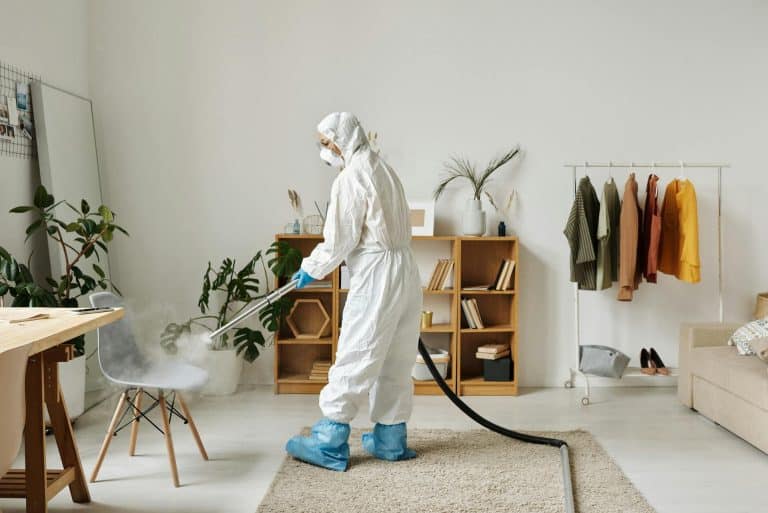Pests don’t just irritate—they affect comfort, damage property, and occasionally carry illnesses. The smartest response treats pest management like home maintenance: a combination of regular checks, targeted habitat modifications, and professional intervention when necessary.
This guide explains how modern pest control services work, identifies the problems that require expert attention, and outlines how to select a partner who prioritizes prevention as seriously as treatment.
Start with A Clear Problem, Not a Can of Spray
The quickest way to waste time and money is to treat visible pests without understanding why they’re there. A useful first step is to turn observations into a problem statement: note when and where you see pests, what you find (such as droppings, nests, or damage), and what has changed on the property (new landscaping, standing water, or a gap under a door).
Professionals use that statement to diagnose root causes—entry points, moisture issues, or food sources—and to design a targeted plan rather than a blanket spray. This inspection-led approach is central to how modern pest control services operate.
Layered Defense: Exclusion, Environment, & Targeted Treatment
Effective plans stack three elements.
- First, exclusion: seal holes, repair screens and install door sweeps so pests can’t get in.
- Second, environmental controls include removing standing water, clearing leaf litter, storing food and firewood properly, and trimming vegetation away from foundations.
- Third, targeted treatments: traps, baits, or professional perimeter barriers applied only where monitoring shows they’re needed. This layered model reduces reliance on chemicals while delivering better long-term results than one-off spraying.
It’s the same logic behind Integrated Pest Management (IPM), which prioritizes prevention and monitoring before control.
When DIY Helps—and when To Call a Pro
Homeowner actions are powerful: clearing clutter, fixing leaks, and emptying containers can cut pest pressure dramatically. But call the pros when sightings continue after basic fixes, when you find nests inside walls when structural damage appears (chewed wiring, sagging timber), or when public health risks are possible (rodents, bed bugs, or heavy mosquito/tick pressure). Licensed technicians bring diagnostic tools, access to specialized treatments, and the experience to design a multi-visit plan that solves, rather than masks, the problem.
Measure Success: Documentation and Metrics Matter
Top-tier pest control services don’t only spray and leave. They document findings, place monitors or bait stations, and establish clear measures of success (such as fewer sightings, no new entry points, or a threshold of acceptable activity), backed up with follow-up visits.
Ask prospective providers how they track results and what their guarantee covers. Clear metrics and written notes are essential if you’re selling the house later or need to demonstrate a recurrence-free period to a buyer or insurer.
Mosquitoes and Ticks: Community Action Multiplies Results
Some pests are neighborhood problems. Mosquitoes breed in small water sources that cross property lines; ticks thrive where yard edges meet wooded strips.
Community clean-ups and coordinated treatment windows multiply effectiveness—a treated yard surrounded by untreated properties will get repopulated.
Extension specialists recommend community-wide efforts for meaningful mosquito control and public education to reduce breeding sites. If mosquitoes or ticks are the main concern, ask providers about multi-property programs or community discounts.
Safety and Sustainability First
Modern pest control services strike a balance between effectiveness and safety. That means using exclusion and habitat changes wherever possible, applying baits and targeted treatments instead of broadcast sprays, and choosing low-toxicity products when appropriate.
Good companies will supply product safety data sheets and explain reentry times for children and pets. If environmental impact matters to you, ask how often a plan prioritizes non-chemical options and whether technicians are trained in IPM practices. How to evaluate quotes—beyond the price tag. When you compare estimates, don’t pick solely on cost. Look for:
- A written inspection report and a clear scope of work.
- Defined pests covered and the treatment schedule.
- Documentation of safety precautions and follow-up visits.
- A retreatment guarantee or satisfaction policy.
- Local references or case studies from similar properties.
A slightly higher price with better documentation and guarantees often saves money compared with repeated DIY attempts or vague, low-cost contracts.
Specialist Situations Need Specialist Care
Certain infestations require licensed specialists: active termite colonies, established bed bug infestations, or large rodent populations inside wall cavities.
These jobs typically involve multi-visit protocols, structural repairs, and specific warranties. If you suspect a specialist problem, insist on a documented plan and engineer- or specialist-signed reports for major structural issues. Practical steps to get started this weekend
- Conduct a 30-minute audit to check for standing water, gaps in screens, food storage, and clutter.
- Tidy gutters and clear drains; remove water-holding containers.
- Move firewood off foundations and trim vegetation away from structures.
- Photograph problem spots and compile them for a technician visit.
- Book an inspection if you see repeated sightings, nests inside structures, or any structural damage.
Where to Go for Local Help
For local, documented perimeter plans and seasonal pest programs, request a site inspection from a licensed provider like Pest Authority—they offer perimeter barrier treatments, mosquito programs, and guaranteed follow-ups in many markets. For authoritative background on the prevention-focused IPM approach, see the EPA’s Integrated Pest Management guidance.
Treat Pest Management Like Home Maintenance
Pest control isn’t dramatic theater—it’s steady maintenance. A mix of homeowner prevention, seasonal planning, and professional, documented pest control services keeps homes healthier, reduces chemical use, and saves money over time.
Start with the simple fixes this week, document what you find, and then get a professional inspection to turn your observations into a lasting plan.
*Sponsored Blog Post













